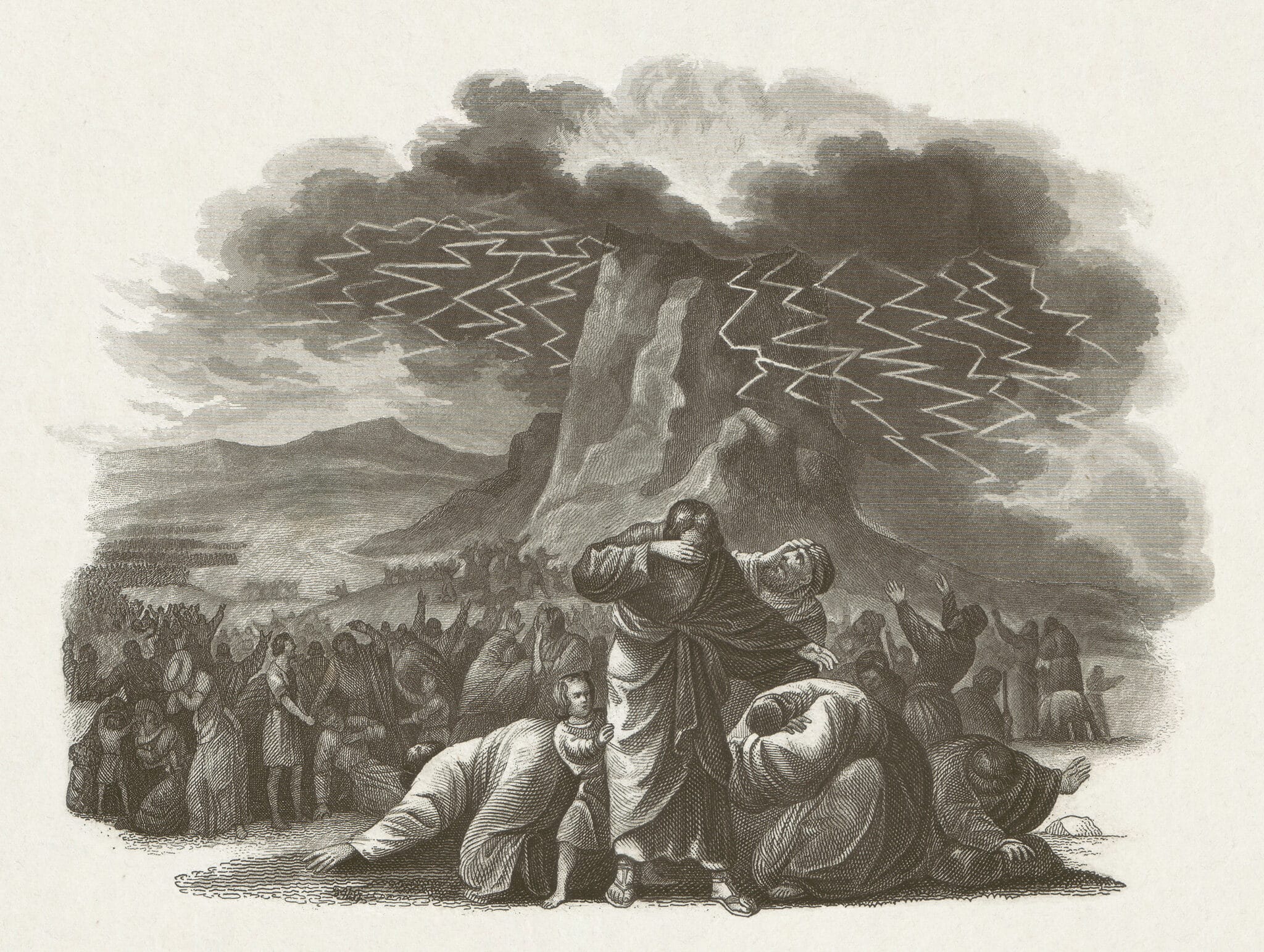 The Legislation to Israel at Mount Sinai. Exodus, Chapter 19. Steel engraving, published c. 1860. (ZU_09/Getty Images)
The Legislation to Israel at Mount Sinai. Exodus, Chapter 19. Steel engraving, published c. 1860. (ZU_09/Getty Images) “If there were a middle ground between things and the soul”—John Berryman, “Dream Song 385”
Kohelet is a meditation on the magnetic allure, and ultimate limitedness, of things. Shlomo HaMelech identifies what we crave in this world: wealth, possessions, physical pleasure, knowledge, fame, intellectual prowess, ego gratification. His conclusion is that these things are haval havalim: vanity, vapor, nothingness, mist. Chasing after them is a striving after wind.
Yet as human beings, we have no choice but to operate in this material world. To process reality requires our physical senses. To act and achieve is dependent on our physical powers. Nevertheless, our tradition constantly admonishes that material things are illusory. Our faith is not in the material, which has no inherent power, nor in bodies that decay and die.
The primacy of the spirit over the physical would appear best captured in the counting of the Omer. Sefirat HaOmer is a journey from Mitzrayim, a place of physical enslavement, to Sinai, a place of spiritual opportunity. We count each day of our ascent from the land of constraint and paralysis, where physicality dominates, to an open plain where lowly human beings, in the shadow of a holy mountain, hear the voice of infinite God.
But what actually happens on that holy mountain? What happens when we come face to face with God’s immanence? When our cognitive faculties, our senses, overflow with ecstatic awareness of God’s existence? What happens when the ground around us shakes violently, shofar blasts deafen us, and lightning and smoke overwhelm us? The Torah tells us. We can’t handle it. We ask Moshe Rabbeinu to intervene, to intermediatebetween us and God.
It’s striking that the “Netivos Shalom” (written by Rabbi Shalom Berezovsky, zt’l) attributes the holiest of intentions to Nadav and Avihu, the sons of Aaron HaKohen, who died in the Mishkan, the Tabernacle. Their deaths were not due to any sort of wrongdoing, says the Netivos Shalom, but rather to their unbounded yearning for intimacy with Hashem at all costs, a desire so intense that it overrode their ability to function in this world. For Nadav and Avihu, intoxication with God meant their souls could not remain in their bodies when the Shechinah was so close by.
What are we to make of the reaction of the Jewish People, so constrained by physical limitation and fear that they could not bear to hear the voice of Almighty God at Mount Sinai? And how can we understand the experience of Nadav and Avihu, whose souls were so untethered to this world that they died as young men in the Mishkan?
As long as we are alive, our souls and bodies are bound together. If we do not attempt to transcend the physical, if we idolize the body and prioritize material things, our tradition tells us we are choosing the temporal over the timeless, the idiosyncratic over what is of infinite worth. In so doing, we risk shutting out God as He speaks to us, as our ancestors felt compelled to do at Sinai. And over a long life, we also risk becoming idol worshipers ourselves. Whether the idol is money, fame, things or our own ego, it’s avoda zara, idolatry. But equally, we cannot live a life unmoored from the physical, material world in which we perform mitzvot, hone our unique capabilities, develop as unique personalities, and define ourselves by how we choose to live. To absent ourselves from this world is also a rejection of our tradition; it’s only in this world that the transformative power of mitzvot is at play.
To absent ourselves from this world is also a rejection of our tradition; it’s only in this world that the transformative power of mitzvot is at play.
But if there were a middle ground between things and the soul—if we didn’t have to oscillate between the grounded physicality of our lives in these bodies at this moment, and the otherworldliness of an astral spirituality disconnected from physical reality—what would that middle ground be? And how would we get there?
Our tradition provides the answer. The middle ground lies in observance of Shavuot each and every year after Matan Torah, the giving of the Torah. If all Jewish souls that will ever live stood at Har Sinai, then each of us carries within us the marker of our own personal encounter with God, even if we could not sustain that encounter for long. The middle ground lies in the retelling, in the ritual of reliving Matan Torah in settings where we can effectively engage as physical beings. On Shavuot our senses and our minds are put to use, and at the same time, our aspirational, grateful soul finds voice as it senses, once again, the arrival of the Shechina.
As long as we’re alive, we are both physical and spiritual and we must integrate and cultivate both of those dimensions of ourselves. There can be no other way. And if we each search for that middle ground, perhaps, with God’s help, we will no longer regret the friction we feel between body and soul as we make our way in this world. Perhaps, instead, as our bodies are nourished with Yom Tov food and drink, our senses enlivened with greenery and with song, our minds broadened with learning Torah, and our souls given space to rise as high as possible in these bodily frames—perhaps the Kedushat Yom Tov of Shavuot itself can enable us to sense more deeply a harmony that embraces both things and the soul, that middle ground between the immutable dual dimensions of every living human being.
Pierre Gentin lives in Westchester County, New York.






















 More news and opinions than at a Shabbat dinner, right in your inbox.
More news and opinions than at a Shabbat dinner, right in your inbox.